How Alberta’s municipalities manage their waste management
When trash enters the garbage can, it is only just starting its journey to be disposed.
In 2016, Canada generated 1.3 million tonnes of residential waste and another 2.9 million tonnes from non-residential sources, according to Statistics Canada. The national average for residential diversion rate was 47%, and Alberta diverted around 36% of all residential waste away from the landfill.
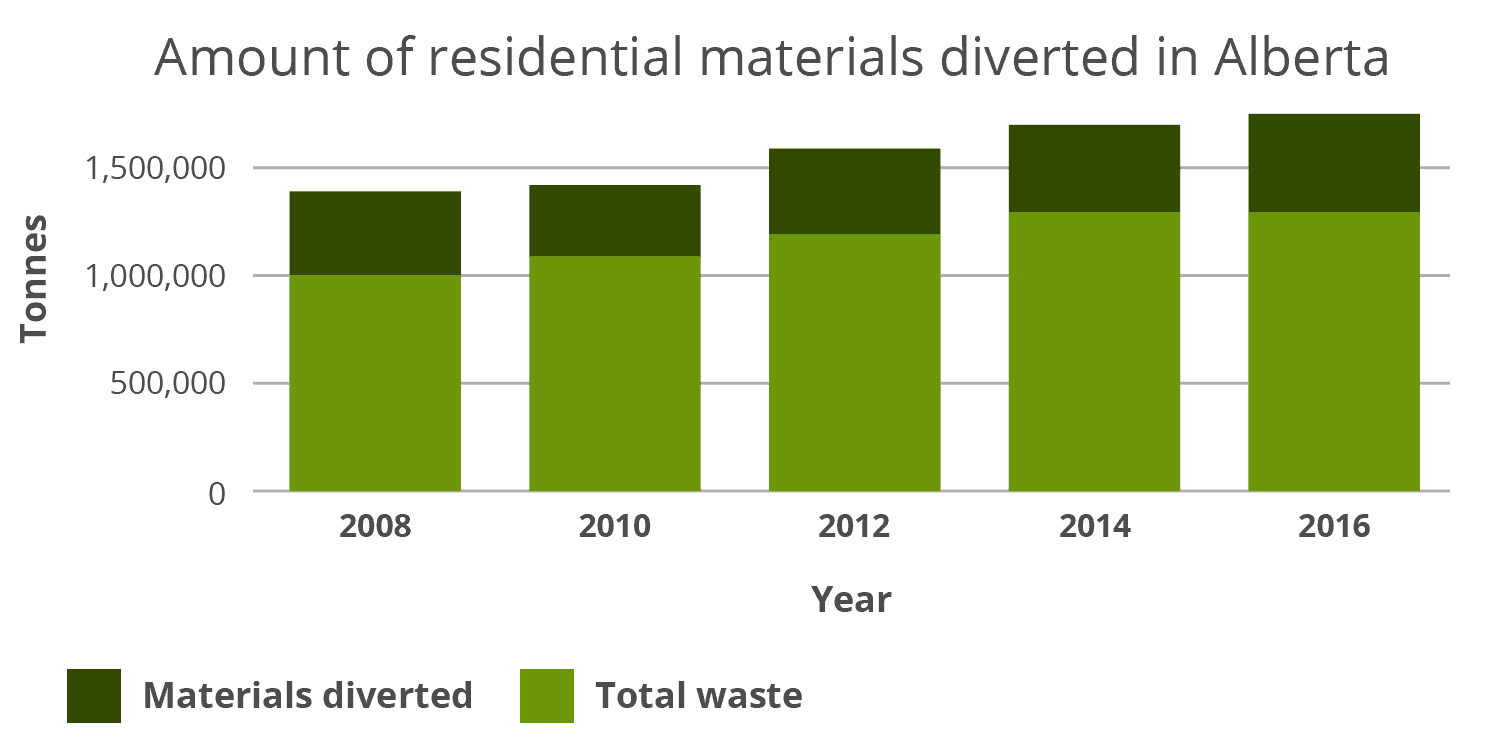
The systems for waste management include collection, centralization and processing – and municipalities have an important role in each step. This overview of the waste management system in Alberta focuses on the context of waste at home and around the world, and models or solutions to improve diversion and reduce waste.
Measuring our waste
Solid waste is a universal issue. Governments all around the world are managing an ever-growing need for waste management – in an approach that reduces the strain on land, resources and finances.
Compared to other countries around the world, Canada’s waste output is dwarfed by China, India and the United States in terms of gross waste generation. When comparing per capita values, Canada is comparable to other highly developed countries.
“Highly developed European and North American countries are disproportionately responsible for the highest levels of waste generation,” reads a 2019 report on global waste generation.
“The highest risk countries in the Waste Generation Index feature the US, the Netherlands, Canada, Austria, Switzerland, Germany, France and Australia.”
The World Bank has compiled waste generation data from over 330 cities around the world on the amount of waste they produce and the destination – whether it be landfill, incineration or diversion. Included in the dataset are Toronto, Ottawa and Vancouver.
Alberta’s approach to waste management
Modern landfills in Alberta are engineered facilities that can accept a range of materials to be disposed or recycled. Waste is collected at waste transfer stations and then transported for final disposal at regional landfills.
Before the 1970’s, the final destination for waste were typically municipal dumps. Since then, the province has moved to a system of consolidating waste at larger sites that have the capability for improved sorting and disposing. Waste is collected at local waste transfer stations (whether through drop-off or a collection service) and then transferred to a regional landfill.
Provincial guidelines regulate the location of landfills – particularly setbacks away from residential developments, food establishments, schools and healthcare facilities.
Land use and waste
The Land-use Framework outline’s Alberta’s approach to regional planning in the province. It sets out the targets (including goals for waste management) that are the basis for regional plans, which municipalities and planning documents must align with.
A provincial outcome outlined in the Land-use Framework is: “Healthy ecosystems and environment.” Under that outcome is the goal of minimizing waste. The specific tactics are not specific, meaning that the regional plans may identify specific targets or approaches that are aligned with minimizing waste.
The South Saskatchewan Regional Plan (the second regional plan to be implemented) provides considerations for the space that is necessary for waste management facilities:
“Non-linear infrastructure such as houses, schools, hospitals, waste management facilities and water and wastewater treatment plants also require large land areas. Where development occurs, what form it takes and how it is distributed across the landscape is a key determinant of how much infrastructure will be needed to service it and how much land will be required to accommodate that infrastructure.”
Comparing municipal services
A group of municipalities in Alberta share data from the delivery of their services through the Alberta Municipal Benchmarking Initiative in order to compare and benchmark municipal services.
In 2017, the municipalities shared the numbers behind their waste management services. The results of the initiative are available in this report: Alberta Municipal Benchmarking Initiative – Solid Waste (April 2017).
Municipal services related to waste management include garbage disposal (which tends to be the smallest expense, but that does not include operation costs of landfills), recycling and collection (which tends to be the largest expense).
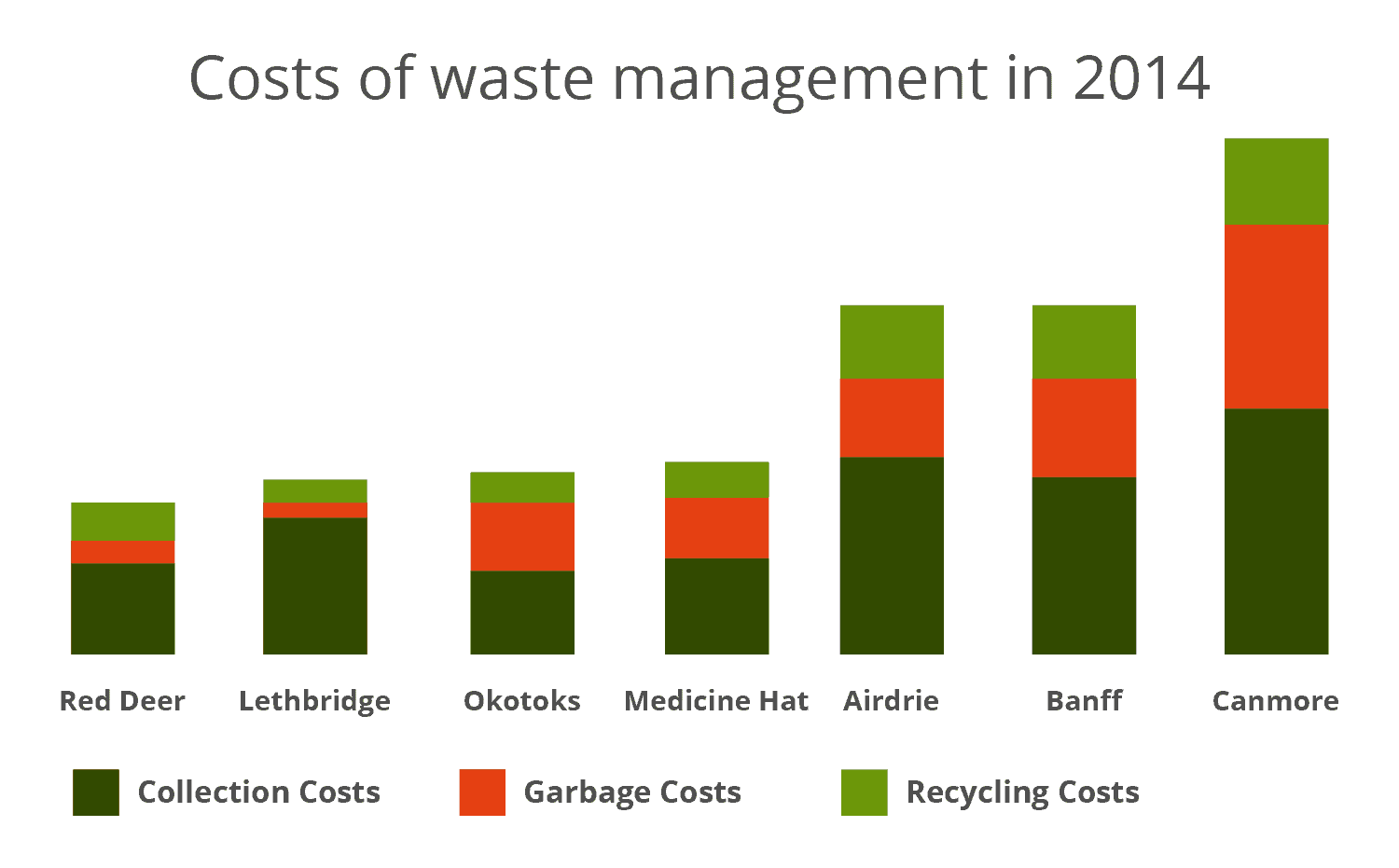
Future of waste management
Ideas and research into the future of waste management are centred around transforming a linear system into a circular system.

Linear waste management
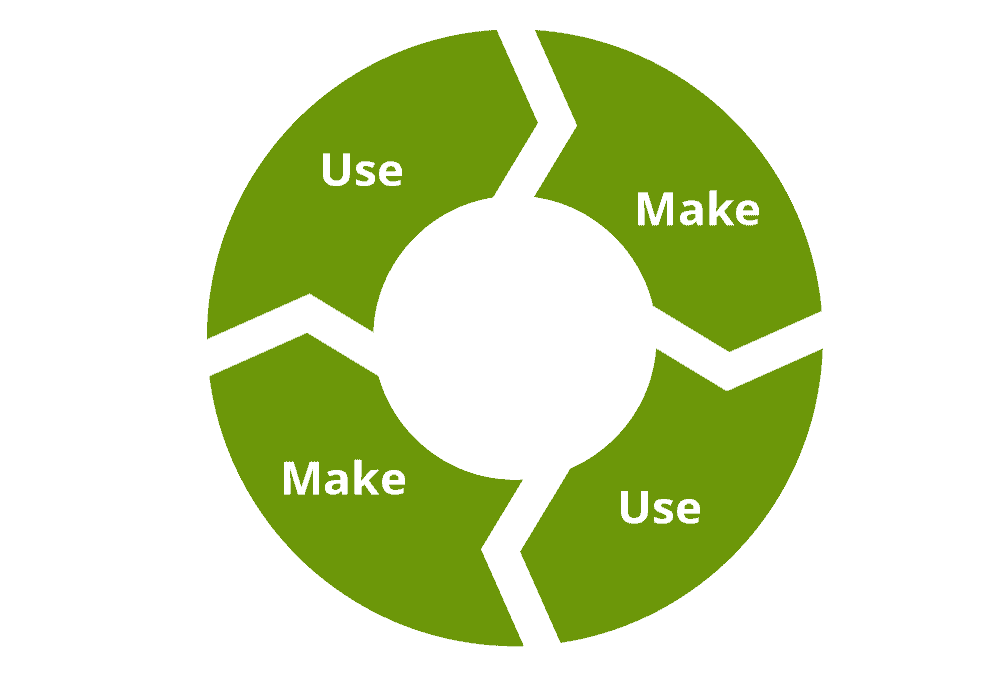
Circular waste management
Waste conversion
Transforming the final step from disposal to energy production can not only reduce waste but also contribute to alternative sources of energy.
The Alberta Clean Technology Road Map is a plan to move towards a lower-carbon economy, including waste management. Waste conversion into energy is one component.
“Innovations in this sector, including new technologies and processes related to source reduction and reuse, recycling and composting, and waste conversion may optimize processing costs and lead to increased waste diversion.”
The opportunities of waste conversion go beyond reducing the amount of waste that ends up in landfills.
“By 2030, the deployment and optimization of waste conversion technologies may result in value-added products, an increase in provincial GDP of $2.6 billion and the creation of 2,000 direct new jobs. Additionally, the sector has the capacity to reduce GHG emissions by up to 3.1 Mt of C02e per year by 2050.”
Imagining a circular economy
In a guide for decision makers on circular economy, Smart Prosperity identified a framework to accelerate a circular economy in Canada.
A circular economy goes beyond product manufacturing and disposal – it envisions a broader economic system where materials and energy are used and returned in a fully sustainable structure.
When it comes to waste management, the goal is “to maximize value and eliminate waste by improving (and in some cases transforming) how goods and services are designed, manufactured and used.”
The steps in a circular economy are – not surprisingly – circular:
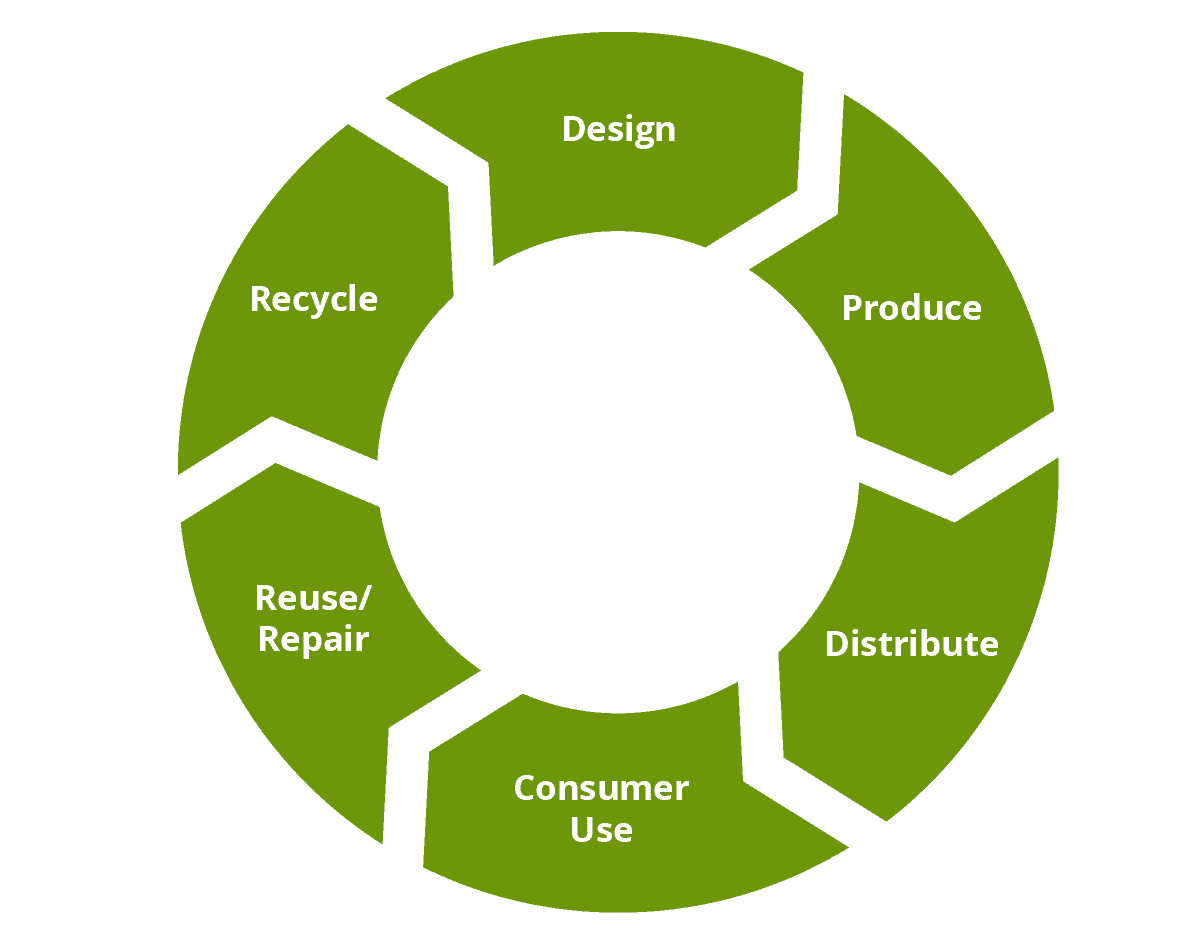
The strategies to achieve the result include:
- Circular supply-chains
- Recovery, reuse, and recycling of resources
- Product life extension
- New business models (e.g., sharing platforms and service leases) for more efficient use of goods and capital assets
- Deep technological innovations
All governments have a role in contributing to a transformation towards a circular economy. Governments at all levels can contribute through policies, buying power and coloration. Some approaches relevant to municipalities include:
- Extended producer responsibility programs and policies
- Green procurement
- Invest in circular economy
- Innovation hubs
- Collaboration
- Create roadmaps for sector-based transitions
Alberta Circular Cities
The Recycling Council of Alberta is collaborating with a group of municipalities to share ideas and resources for waste reduction. The project – called Circular Cities Alberta – supports a variety of initiatives across the province, including:
- Repair cafes: Free events where residents can get the assistance from volunteers to repair broken items (organized by ReThink Red Deer)
- Food rescue: Pick up food that was destined to be thrown out and deliver to people and groups in need (organized by Banff Food Rescue and Leftovers Foundation)
- Re-use it centres: Centres that accept items for reuse or repurposing
- Sustainable building policies: A commitment from municipalities to procure materials from recycled content that are regionally avaible or reused.
Learn more about the Circular Cities project in a webinar from the Recycling Council of Alberta.
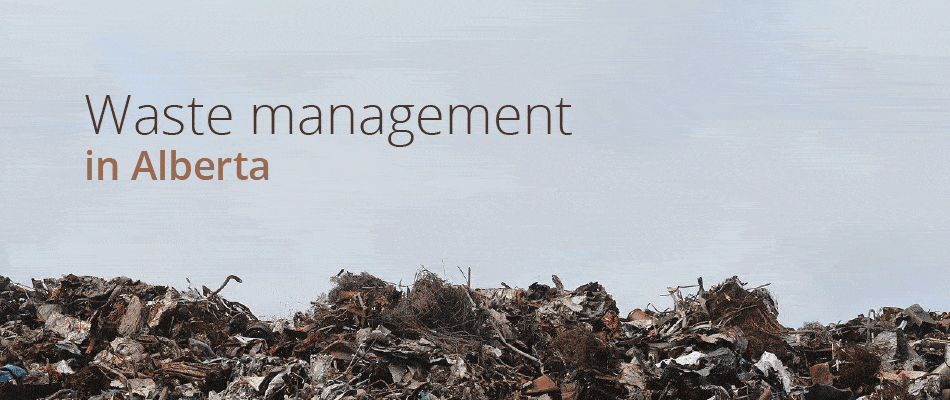
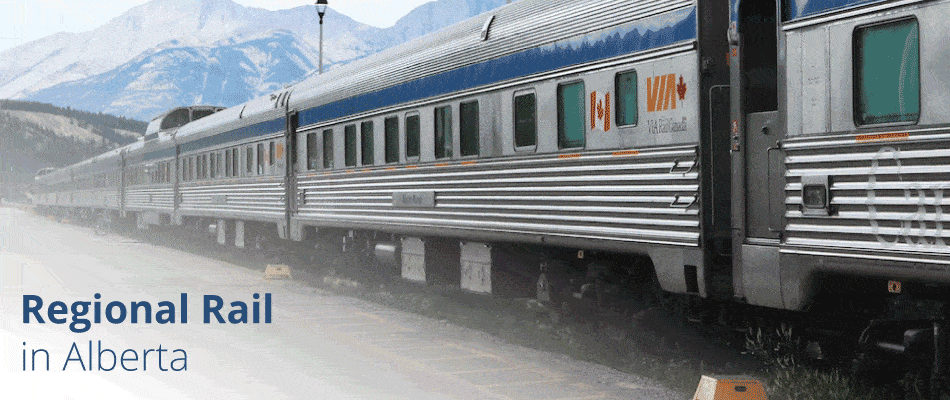
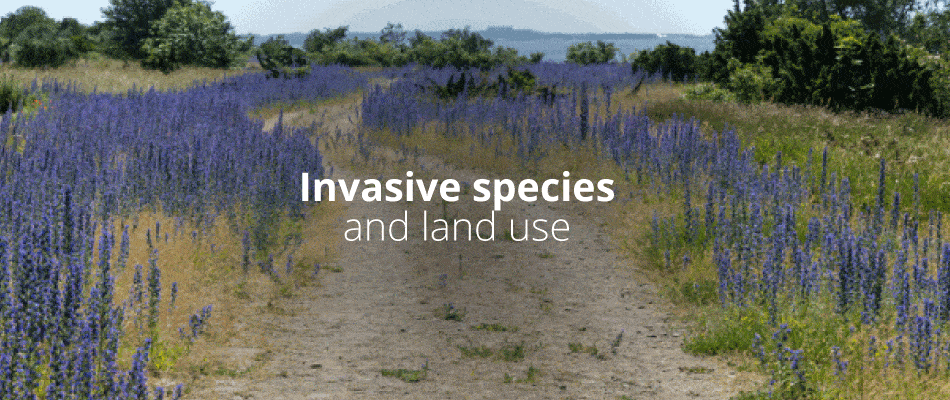

Recent Comments